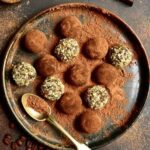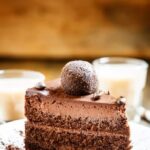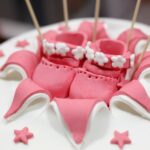Are you looking to learn how to decorate a cake with whipped cream? Whipped cream is a versatile and delicious option for decorating cakes, adding a light and airy texture while providing a smooth and creamy finish. In this article, we will take you through the step-by-step process of creating beautifully decorated cakes using whipped cream. From choosing the right cake to troubleshooting common problems, we’ve got you covered.
When it comes to decorating a cake with whipped cream, choosing the right type of cake is crucial. A sturdy and dense cake, such as a pound cake or sponge cake, works best for holding up the weight of the whipped cream without collapsing. The surface of the cake should also be flat and even to ensure a smooth and polished finish.
One of the most important factors in successful whipped cream decoration is ensuring that the whipped cream is properly chilled. This helps it hold its shape and prevents it from melting too quickly when applied to the cake.
We will guide you through selecting the right equipment for whipping the cream, preparing it to achieve the perfect texture, and avoiding common pitfalls along the way. Stay tuned for our expert tips on creating stunning decorative patterns and designs using whipped cream.
The Importance of Chilled Whipped Cream
Whipped cream is a versatile and delicious way to decorate cakes, adding a light and airy touch to any dessert. However, one of the most important factors in successfully decorating a cake with whipped cream is ensuring that the whipped cream is properly chilled. Here’s why the temperature of the whipped cream matters and how to ensure it stays cold throughout the decorating process.
- Properly chilled whipped cream holds its shape better when decorating a cake. If the whipped cream is too warm, it may begin to melt and lose its structure, making it difficult to achieve clean lines and decorative designs.
- Chilled whipped cream also provides better stability for any added flavorings or colors. When whipped cream is cold, it can hold onto these additions without becoming runny or separating.
- To ensure that your whipped cream stays chilled throughout the decorating process, it’s important to work efficiently and keep your tools and equipment cold as well. Consider placing your piping bags, tips, and spatulas in the refrigerator before using them for decorating.
By prioritizing properly chilled whipped cream during the cake decorating process, you can achieve professional-looking results that will impress your friends and family. With this simple but crucial step in mind, you’ll be well on your way to creating beautifully decorated cakes with irresistible whipped cream toppings.
Step-by-Step Guide to Preparing and Whipping the Whipped Cream
Choosing the Right Whipped Cream
When decorating a cake with whipped cream, it’s important to choose the right type of whipped cream. It’s best to use heavy whipping cream, as it has a high fat content which makes it easier to whip and provides stability for decorating. Avoid using light whipping cream or half-and-half as they won’t hold their shape well when decorating.
Chilling the Whipped Cream
Before you start whipping the cream, make sure that it is well chilled. Place the mixing bowl and beaters in the refrigerator for at least 15 minutes before using them. The cold temperature helps the whipped cream hold its shape and prevents it from becoming runny too quickly.
Whipping the Whipped Cream
To begin, pour the chilled heavy whipping cream into a mixing bowl. Using an electric hand mixer or stand mixer, start beating the cream on low speed. Once it starts to thicken, increase the speed to medium-high. Keep an eye on the texture and stop when soft peaks form. Be careful not to overwhip the cream, as it can turn into butter if beaten for too long.
Incorporating powdered sugar and vanilla extract can add sweetness and flavor to the whipped cream during the final stages of whipping, so feel free to add these ingredients according to your taste preferences.
Tools and Equipment Needed for Decorating With Whipped Cream
Decorating a cake with whipped cream requires the right tools and equipment to ensure a successful and beautiful result. The first essential tool is a sturdy cake stand or turntable, which allows for easy rotating and decorating of the cake. An offset spatula is also necessary for spreading the whipped cream smoothly onto the cake’s surface. Additionally, having piping bags and various tips will enable you to create intricate designs and patterns with the whipped cream.
In addition to the basic tools, it is important to have a set of icing combs or scrapers to create textured finishes on the whipped cream. These combs come in various designs, allowing for different decorative effects on the cake’s surface. Another useful piece of equipment is a bench scraper, which helps achieve smooth sides and edges when frosting the cake with whipped cream.
Furthermore, it is important to have a set of cake decorating brushes for adding color or luster dust to the whipped cream decorations. These brushes are essential for painting on edible food coloring or applying shimmering dust for an extra pop of color. Lastly, having a good quality cake lifter or large flat spatula will help transfer the decorated cake onto a serving platter without damaging the whipped cream decorations.
| Tools/Equipment | Function |
|---|---|
| Cake stand/turntable | Allows easy rotating and decorating of the cake |
| Offset spatula | For spreading whipped cream smoothly onto the cake |
| Piping bags and tips | Create intricate designs and patterns with whipped cream |
Techniques for Creating Decorative Patterns and Designs
Decorating a cake with whipped cream offers unlimited possibilities for creating beautiful and intricate designs. Whether you’re a beginner or an experienced baker, there are various techniques you can use to create decorative patterns and designs that will make your cake stand out. Below are some popular techniques for creating stunning decorations with whipped cream:
- Rosettes and swirls: Using a piping bag fitted with a star-shaped tip, you can create elegant rosettes and swirls on the surface of your cake. Simply apply gentle pressure to the piping bag while moving in a circular motion to create these classic designs.
- Border piping: To add a polished finish to the edges of your cake, try using a round piping tip to create simple yet eye-catching borders. You can also experiment with different tips to achieve varying border styles, such as scalloped or zigzag patterns.
- Stenciling: For more intricate designs, consider using stencils to decorate your whipped cream cake. Place the stencil directly onto the cake’s surface and gently dust powdered sugar or cocoa over it. Carefully lift the stencil to reveal a beautifully detailed design.
In addition to these techniques, you can also experiment with combining different tips and colors to create unique decorations for your cake. With practice and creativity, you’ll be able to master these techniques and take your whipped cream decorating skills to the next level.
Finally, don’t forget that practice makes perfect when it comes to creating decorative patterns and designs with whipped cream. Be patient with yourself as you develop your skills, and don’t be afraid to experiment with new ideas and methods. With dedication and creativity, you’ll soon be able to decorate stunning cakes that are sure to impress any audience.
Adding Flavor and Color to Whipped Cream for an Extra Pop
Adding flavor and color to whipped cream can take your cake decorating to the next level, adding an extra pop of both taste and visual appeal. While traditional whipped cream is delicious on its own, adding flavors like vanilla, almond, or even a hint of citrus can elevate the overall taste of your cake.
To infuse flavor into your whipped cream, simply add a small amount of extract or zest as you begin to whip the cream. Remember that a little goes a long way, so start with a small amount and adjust to taste.
In addition to flavor, you can also add color to your whipped cream for a visually stunning effect. Gel food coloring works best for this purpose, as it won’t water down the consistency of the whipped cream. Start by adding a small amount of coloring gel to the cream before whipping it.
Keep in mind that whipped cream tends to lighten in color as it’s whipped, so aim for a slightly deeper shade than your desired final result. You can always add more coloring if needed.
Experimenting with different flavors and colors can add a fun and creative element to your cake decorating process. Whether you’re aiming for a classic look with vanilla-flavored white whipped cream or want to get adventurous with vibrant hues and unique flavor combinations, using flavored and colored whipped cream is an easy way to customize your cakes and impress everyone with not just how they look but also how they taste.
Tips for Achieving the Perfect Texture and Consistency
Achieving the perfect texture and consistency for whipped cream is essential for successful cake decorating. The right texture ensures that the cream holds its shape and doesn’t deflate, while the perfect consistency allows for smooth piping and beautiful designs.
Quality Ingredients
Using high-quality heavy cream with a high fat content is crucial for achieving the perfect texture and consistency. Look for heavy cream with a fat content of at least 36% for best results. Additionally, using fresh ingredients is key – avoid using expired or nearly expired cream as it may not whip properly.
Chilled Equipment
Before whipping the cream, it’s important to chill your bowl and beaters in the freezer for at least 15 minutes. This helps keep the cream cold during the whipping process, which contributes to achieving the desired texture and consistency.
Whipping Technique
When whipping the cream, start at a low speed to gradually incorporate air into the mixture. As it thickens, increase the speed but be careful not to over-whip, as this can cause the cream to turn into butter. Stop whipping once you reach stiff peaks – when you lift the beaters out of the cream, it should hold its shape without collapsing.
By paying attention to these tips and techniques, you can ensure that your whipped cream has the perfect texture and consistency for decorating a cake beautifully.
Troubleshooting Common Whipped Cream Decorating Problems
Decorating a cake with whipped cream can be a delightful experience, but it can also come with its fair share of challenges. One common problem that many bakers encounter is the issue of the whipped cream losing its shape and becoming runny.
This can be caused by over-whipping the cream, using a low-fat cream, or working in a warm environment. To avoid this issue, it’s important to use heavy cream with a high fat content (at least 36%), ensure that your equipment and ingredients are cold, and avoid over-whipping the cream.
Another common problem when decorating with whipped cream is the stability of the design. If you find that your decorative patterns are not holding their shape or are melting quickly, it may be due to excess moisture on the cake’s surface.
To prevent this, make sure that the cake is completely cooled before applying the whipped cream, and pat the surface dry if necessary. Additionally, adding stabilizers such as gelatin or cornstarch to the whipped cream can help maintain its structure for longer periods.
Color fading is also a typical issue when using whipped cream for decoration, especially if you’ve added food coloring to achieve vibrant hues. To prevent this problem, consider using gel-based food coloring instead of liquid ones as they are less likely to dilute the whipped cream’s texture and color. It is also essential to keep your decorated cake away from direct sunlight or heat sources to preserve its appearance.
| Common Whipped Cream Problem | Troubleshooting Solution |
|---|---|
| Loss of shape and runny texture | Use heavy cream with high fat content; work in a cool environment; avoid over-whipping |
| Lack of stability in designs | Ensure cake surface is completely cool and dry; consider adding stabilizers like gelatin or cornstarch |
| Fading colors | Use gel-based food coloring; store decorated cake away from direct sunlight or heat sources |
Creative Ideas for Using Whipped Cream to Decorate Different Types of Cakes
When it comes to decorating cakes with whipped cream, there are endless creative possibilities to explore. Whether you’re working with a classic vanilla sponge, a rich chocolate cake, or a light and airy angel food cake, whipped cream can be used in various ways to add beauty and flavor to your creations.
One popular technique is to create rosettes or swirls on the top of the cake using a piping bag fitted with a star-shaped tip. This simple yet elegant design works well on any type of cake and can be further embellished with fresh fruit, chocolate shavings, or sprinkles.
For a more rustic and casual look, consider spreading a layer of whipped cream over the entire surface of the cake. This creates a soft and pillowy appearance that is perfect for informal gatherings or outdoor events. To add visual interest, use an offset spatula to create swoops and peaks in the whipped cream, giving it an artistic and homemade feel.
If you’re feeling particularly adventurous, try layering different colors and flavors of whipped cream between the cake layers. For example, you could alternate between traditional vanilla whipped cream and strawberry-flavored whipped cream for a playful and eye-catching effect.
This technique adds depth and dimension to your cake while also providing a surprise burst of flavor with each bite. Ultimately, the key is to have fun experimenting with various decorating techniques and finding creative ways to make your cakes stand out with whipped cream decorations.
Final Touches and Presentation for a Beautifully Decorated Whipped Cream Cake
In conclusion, mastering the art of decorating a cake with whipped cream can elevate any homemade or store-bought cake to a professional level. By following the step-by-step guide for preparing and whipping the whipped cream, choosing the right cake, and utilizing the appropriate tools and equipment, anyone can create stunning and delicious whipped cream cakes.
Adding flavor and color to whipped cream is a fun way to personalize each cake creation, whether it’s using extracts like vanilla or almond, or incorporating bright food coloring for a vibrant aesthetic. The key to achieving the perfect texture and consistency lies in properly chilled whipped cream and careful attention to detail during the whipping process.
Furthermore, by implementing creative ideas and techniques for creating decorative patterns and designs, individuals can turn their whipped cream cakes into works of art. Whether it’s using piping bags and tips to create intricate designs or opting for a more rustic look with dollops of whipped cream and fresh fruit, there are endless possibilities for transforming a simple cake into an eye-catching centerpiece.
Lastly, paying attention to final touches and presentation will ensure that the beautifully decorated whipped cream cake is not only visually appealing but also sure to impress with its delicious taste.
Frequently Asked Questions
How Do You Keep Whipped Cream From Melting on a Cake?
Keeping whipped cream from melting on a cake involves stabilizing it with ingredients like gelatin, cornstarch, or powdered sugar. This helps the whipped cream maintain its texture and shape even when exposed to warmer temperatures.
How Long Will Whipped Cream Last on a Cake?
Whipped cream can last on a cake for about 1-2 days if refrigerated properly. It is important to store the cake in an airtight container to prevent the whipped cream from absorbing any odors or flavors from the fridge.
Do You Have to Refrigerate Cake With Whipped Cream Frosting?
Yes, cakes with whipped cream frosting should be refrigerated. Whipped cream is a perishable ingredient and can spoil if left at room temperature for too long. Refrigeration helps to keep it fresh and safe to consume for a longer period of time.

Welcome to my blog about home and family. This blog is a place where I will share my thoughts, ideas, and experiences related to these important topics. I am a stay-at-home mom with two young children. I hope you enjoy reading it! and may find some helpful tips and ideas that will make your home and family life even better!





